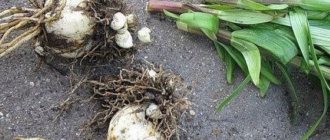Any roses are beautiful and spectacular when they bloom, but climbing ones are even more so. The charm of a blooming canopy is so great that even the most unprepossessing flower garden can be instantly transformed as soon as the first buds of climbing roses turn into bright flowers. In order for plants to enjoy annual flowering, it is necessary to properly care for climbing roses, which will be the topic of this article.
Planting a climbing rose
Proper planting is the foundation for the health of a climbing rose. In general, the process is no different from planting any other type of rose, but there are some minor nuances.
Landing dates
Climbing roses can be planted in both autumn and spring. However, experts recommend choosing the first option: roses planted in autumn are better hardened and begin to grow faster, while spring seedlings will lag behind in development by a couple of weeks.
Autumn planting is carried out in mid-autumn (from mid-September to mid-October), when the heat has already subsided and frost has not yet set in. In this case, by the first frost, the seedlings will already have time to form young roots.
True, in northern regions with harsh winters this method is somewhat risky - young plants may die. If you are not sure that your roses will survive the winter well, it is best to play it safe and plant them in the spring, in late April - early May.
Choosing a landing site
Climbing roses love well-lit areas, so choose sunny or, in extreme cases, semi-shaded corners of the garden for the seedling.
Climbing roses are best planted on the southeast side
This crop does not tolerate excess moisture well, so you should not plant the rose in heavy clay soil with a high level of groundwater. The soil must be fertile and loose. Ideally, a plot with a slight slope to the south should be allocated for planting climbing roses.
Preparation of seedlings
It is preferable to choose self-rooted climbing rose seedlings for planting, although they develop a little slower than grafted ones.
Healthy climbing rose seedlings
A high-quality seedling should have at least 2-3 strong woody shoots. Make sure that the bark on the shoots is a healthy green color, without damage. The root system should be well developed, with a large number of thin white roots.
Before planting, the seedlings are placed in water for several hours so that they are saturated with moisture. In spring, seedlings with an open root system (that is, with bare roots) are also best placed for a day in a container with a root formation stimulator (Kornevin, Kornerost, KorneStim, Heteroauxin, etc.).
Immediately before burying the seedling in the ground, it must be trimmed a little, removing all damaged roots and slightly (by 5-10 cm) pruning old, too long rhizomes.
Before planting, seedlings with both closed and open root systems are soaked in water
If you are a beginner gardener and are not confident in your abilities, the easiest way is to choose seedlings with a closed root system (in containers). There is no need to trim them before planting. It will be enough to soak the earthen lump in water.
Before planting, make sure you buy a truly container seedling. The earthen lump should not crumble; it should be pierced by thin white roots.
Preparing the planting hole
It is worth considering that the roots of a climbing rose can penetrate the soil to a depth of 2 m. If the groundwater in your area lies high enough (higher than 2 m from the surface of the earth), before planting you need to dig a hole to a depth of 1 m and concrete it or put a stone at the bottom, and then pour a fertile layer of soil on top. This will not "miss" the roots of the rose below, and they will develop horizontally.
Before planting a climbing rose, the ground is cultivated to a depth of at least 0.7-1 m
The optimal width of the planting hole is 40-50 cm. Usually for one seedling it is enough to dig a hole with a volume of two 10-liter buckets.
The distance between rambler seedlings should be 1.5-2 m, between climber seedlings - 1-1.5 m.
When planting, keep in mind that for the winter the rose vines will have to be removed from the support and covered. Make sure there is free space next to the bush for this.
Soil for climbing roses
For lush flowering, these beauties need fertile, loose, ideally loamy soil. If the soil on your site is far from this ideal, it must be improved before planting.
Sand is added to clay soil, and a little clay is added to sandy soil. This will not affect the fertility of the soil in any way, but will help regulate its air and moisture permeability. To enrich the poor soil, black soil and vermicompost are added to it. The hole is filled approximately 2/3 with this soil mixture (so that the roots of the seedling can freely fit into it).
Fertilizers for planting climbing roses are applied to the top layer of soil
Fertilizers are added to the top layer of soil into which you will directly bury the seedling: 5 kg of rotted manure or compost, 1 cup of wood ash. You can also feed the rose with complex potassium-phosphorus fertilizers (15 g per plant). But you need to be careful with nitrogen fertilizers: they are applied only during spring planting (20 g per plant).
It is also a good idea to enrich the soil with beneficial microorganisms, which will convert substances that are “inedible” for roses into useful ones. For example, the drug Baikal EM1 contains such bacteria.
Landing technology
After the planting hole has been prepared, and the seedlings have been saturated with water and have undergone sanitary pruning, you can begin the process itself.
The depth of the seedling depends on whether it was grafted or not.
Place a layer of fertile soil at the bottom of the hole. Place the rose in the center of the hole and fill it with soil mixture and fertilizer. Plant your own rooted seedlings 5 cm deeper than they grew before; plant the grafted ones so that the grafting site is 10 cm below the soil level.
Gently compact the soil around the seedling and water well. It is also advisable to hill the rose with a mixture of soil and sand to a height of approximately 20 cm.
Mulching the soil
A good way to preserve moisture, soil structure, and stop weeds from growing is to mulch the bush at the base with organic materials. You can use rotted straw, pine litter, peat, and crushed plant residues. For mulch to work, a layer of at least 5–10 cm is required.
Decorative filling with crushed stone, pebbles, and expanded clay can also serve as a mulch layer. These materials are poured after covering the soil with geotextile.
An example of decorative filling of climbing roses with crushed stone
Climbing rose watering mode
In dry weather, young plants are watered every other day, adults - every 10-12 days. One bucket (10 liters) of water is enough for one bush. In particularly dry weather, you can empty two buckets.
5 days after watering (or after rain), the soil around the bush must be loosened to prevent moisture from quickly evaporating.
Climbing roses react equally poorly to both lack and excess moisture.
If the summer is hot, you can mulch the tree trunks to prevent the plant from dehydrating.
With the end of flowering, stop frequent watering and loosening of rose bushes. This is necessary to prepare the plant for winter.
Pest Control
In hot and humid summers, climbing roses often suffer from powdery mildew. To nip a fungal infection in the bud, in the spring, treat the plants twice with a one percent Bordeaux mixture: immediately after removing the cover - on the dormant buds; again - along the growing shoots.
Roses are often attacked by aphids. If you are not using the petals for culinary or cosmetic purposes, insecticides can be used to control the pest. Otherwise, you will have to rely on folk remedies - infusion of potato or tomato tops, tobacco decoction, etc.
Feeding climbing roses
does not need additional feeding in the first year If desired, you can water them with mullein infusion (1:10) or chicken manure (1:20) once a season. 3-5 liters of fertilizer are poured under one bush.
In the second and subsequent years, climbing roses are fed according to the following scheme.
| Feeding time | Name of fertilizers |
| After removing the winter shelter | Ammonium nitrate (1 tbsp per bush in moist soil, after fertilizing the bush is watered) |
| 2 weeks after the first feeding | The same |
| During the budding period (April-May) | Complex nitrogen-containing fertilizers (for example, Fertika Lux at the rate of 30 g per 1 sq.m.) |
| Before flowering begins (June) | Infusion of mullein (1:10) or chicken manure (1:20) at the rate of 3-5 liters per bush |
| After the first wave of flowering (late July - early August) | A mixture of superphosphate (25 g per 10 l of water) and potassium sulfate (10 g per 10 l of water) or complex phosphorus-potassium fertilizers without nitrogen content (according to instructions) |
| After complete flowering (September) | Superphosphate (30 g per 1 sq.m.) |
Without comprehensive mineral nutrition it is difficult to achieve luxurious flowering of climbing roses
Here are some more facts you should know about feeding climbing roses:
- An excess of nitrogen can cause the rose to grow a lush green mass, but never bloom.
- Climbing roses respond very well to foliar feeding (by leaves). They are carried out in the summer and only in dry, warm weather in the morning. To avoid burning the leaves, the recommended dose of fertilizer is reduced by 2 times.
- Climbing rose bushes can be mulched with rotted manure. It is best to do this in the fall.
Care
Caring for climbing roses is quite easy, follow 3 rules: water, fertilize, prune. Rose bushes are watered approximately once every 10 days; if it is a dry period, then the frequency of this operation increases. Do not allow the soil to dry out. It is better to water climbing roses in the morning or evening. Do not use sprinkling, as water on the leaf provokes the development of fungus.
Organic fertilizers (manure, humus) decompose within two years. Therefore, they are applied in the first year, and in the next year fertilizers are added, which ones depends on the growing season. Over the entire period maybe 4-5 times. Climbing roses are fed first with nitrogen, then with phosphorus and calcium, and in the fall with potassium to increase winter hardiness.
Rambler or Climber?
Not all novice flower growers are aware that climbing roses are divided into two large groups - ramblers (“creeping”) and climbers (“climbing”). As a result, newbies encounter unexpected problems. For example, despite feeding and reliable winter shelter, the rambler does not bloom due to excessive spring pruning. Or a naughty climber vine just doesn’t want to curl around the support.
Ramblers - classic climbing roses
Ramblers can be considered classic climbing roses. These are the kinds of shrubs that were grown in the traditional English garden 100 or 200 years ago. Climbers are hybrids of ramblers with other types of roses (for example, tea roses).
To ensure that all your efforts in caring for your rose bush are not in vain, it is important to correctly identify the group of climbing roses. To make it easier for you to do this, we have compiled a short visual table of the main differences between ramblers and climbers.
Climbers have larger flowers than ramblers
| Ramblers | Climbers | |
| Shoot length | Up to 8 m | 2-4 m |
| Bloom | Once in June-July on last year's shoots (but there are exceptions) | Single or repeated in June-August, depending on the variety, on current shoots (sometimes also on last year’s shoots) |
| Flowers | Small-flowered, double and simple, usually about 7 pieces. in inflorescence | Large-flowered, usually about 5 pieces. in inflorescence |
| Pruning requirements | When pruning, the main long shoots must be preserved, otherwise the rose will not bloom. | Strong preventive pruning is acceptable |
| Forming features | Flexible lashes can be easily formed on any support | Thick shoots practically do not bend. As a rule, they can only be twisted around a pole or thrown over a grate |
Rose growers have managed to develop several varieties of re-blooming ramblers: Super Dorothy, Snow Goose, Super Excelsa, Malvern Hills, Super Fairy, etc.
Description of the plant
How and when to plant a climbing rose should be considered before you start growing a flower on your site. You need to understand in what conditions it will feel good and will thank its owners with lush flowering.
You need to understand what kind of plant this is. This species includes many climbing roses. They differ in some characteristics. So, the rambler rose belongs to the first category. It is a climbing plant that has long arching or creeping branches. Their length reaches 5 m or more. Plants of this group have small leaves. Semi-double simple flowers have a weak aroma and reach 2.5 cm in diameter. They are located along the entire length of the branches. Rambler rose blooms in the first half of summer for about a month. If you are choosing the best varieties of climbing roses that can withstand even severe frosts (under cover), give preference to this group of plants.
As a result of the hard work of breeders, rose varieties of the climber group were developed. These are climbing plants, the shoots of which reach a length of 4 m. These are large-flowered climbing roses. Their buds reach a diameter of 4 cm or more. Many representatives of plants of this subspecies bloom twice a year. Almost all varieties of this group are winter-hardy climbing roses that bloom all summer. At the same time, they are resistant to pests and diseases and thrive in the local climate.
The third group includes climbing varieties. They do well in the southern regions. These are plants with large flowers, the diameter of which ranges from 4 to 11 cm. They grow singly or form a small group of inflorescences. Many climbing plants bloom twice a season. These are roses that cannot tolerate severe frosts.
Rambler trimming
As we said above, climbing roses of the Rambler group do not respond well to too intense pruning.
a young annual seedling in the spring, leaving 2-4 strong shoots and cutting the rest into a ring.
In the fall of the first year, you don’t have to trim the rambler at all. As a last resort, it is allowed to shorten or remove excess, improperly growing or damaged side branches.
In the spring of the second year of life, the tops of the plants are lightly trimmed to stimulate branching. Side shoots are shortened to 2-3 buds. In the summer of the second and subsequent years after flowering ends, side shoots with faded inflorescences are removed.
In the fall of the second and subsequent years, ramblers are left with several shoots of the current season, several shoots from last year (on which there was flowering) and, if desired, no more than one old three-year-old shoot. The remaining branches are cut into a ring. There is no need to feel sorry for them, since ramblers practically do not bloom on shoots older than 2 years.
In the spring of the second and subsequent years, biennial shoots of adult plants are shortened to 1-3 strong buds. Last year's shoots (which will bloom this year) have their tops slightly shortened. Old and damaged shoots that were not removed in the fall are cut into a ring.
Rambler trimming scheme
In general, it is better not to trim ramblers at all than to trim them too much.
Reproduction
Climbing roses can be propagated by cuttings, grafting and layering. A small number of large-flowered roses can be budding or grafting (with a dormant eye into the root collar of a rose hip). For propagation by cuttings, take rose hips and cuttings (produces a larger number of plants and 100% rooting), which are cut out in September (large-flowered) or after flowering (multifloral).
Cuttings are cut 16–20 cm long from immature flower or faded shoots, in which the thorns easily break off. We remove the bottom two leaves, cut the other one in half, make an oblique cut (45 °) under the bud, but so as not to injure it. A climbing bush seedling is placed in a mixture of earth and sand and covered with a jar and film. Before planting, dip the cuttings in a growth agent (for example, Kornevin).
To propagate by layering, we select a good stem of a climbing rose, dig a hole up to 15 cm wide, and put humus at the bottom. We place the shoot in a hole and cover it with earth. The top should stand vertically, so the stem is pinned in several areas. We do not allow it to dry out, next spring we cut off the cuttings from the mother plant, and do not allow it to bloom the first year.
After reading this article, you learned a lot of interesting things about how you can grow climbing roses at home.
Trimming climbers
Despite the fact that climbers bloom on both last year’s and young shoots, it is still advisable to regularly remove old branches. Flowering on them worsens, they are more susceptible to all sorts of diseases, and they simply make the bush unkempt and unkempt.
It is not necessary to prune climbers in the fall, especially if your region has harsh winters. If you are sure that the plant will overwinter without problems, you can remove too old, damaged shoots.
In spring, the main pruning of climbers is carried out. Three-year-old shoots (on which the rose most likely will either not bloom at all or will bloom sparingly) are cut into a ring. Damaged, frozen, dry shoots are removed. Dried tops of two-year-old shoots are slightly trimmed. Small side shoots are pruned to 1-2 buds.
Climber trimming diagram
It is quite difficult to distinguish a two-year-old shoot from a three-year-old shoot of climbing roses. Therefore, if you have doubts, it is advisable to mark them with multi-colored ribbons or tags.
Growing
Climbing roses are fairly easy to grow as they grow roots quickly, so they can be planted in both spring and fall. Not every variety from different groups can be planted in the fall, since the roots are shallow in the first year and the possibility of freezing is high.
So, climbing varieties are hardy plants and are suitable for both beginners and professionals.
The root system of climbing roses is one of the deepest, reaching about 2 meters. In addition, climbing roses are not demanding in terms of growing conditions and are not so affected by diseases and pests.
Some of the most common diseases they attack include spider mites, aphids, powdery mildew and blight. You can learn about methods of struggle and treatment in this article.
Winter shelter for climbing roses
Many gardeners hill up and mulch their climbing roses with peat, sawdust or plain soil for the winter. But sometimes such excessive precautions can only harm the plant.
If your climate experiences frequent thaws in winter, and sleet and rain are not uncommon, the rose may begin to rot and rot. Hilling roses in such conditions is possible only if they are planted on a slope and the water near the bush does not stagnate for a long time.
If you mulch a rose with sawdust, under no circumstances cover it with boards for the winter. Otherwise, mice may settle under this cozy shelter and will gladly diversify their meager winter diet with the shoots of your rose.
For winter covering of roses, thick spunbond (non-woven, agrotex) is best suited. The width of the covering material must be at least 0.5 m. The wider the spunbond, the better. This will create the necessary air gap and will not allow the plant to freeze or freeze during a thaw. In the middle zone, climbing roses will require 2-3 layers of cover.
It is advisable to install shelters on arches so that in the event of heavy snowfall the branches do not break.
The shelter is installed on supports so that a thick layer of snow does not break the rose
The rambler lashes are carefully removed from the support, placed in a ring and covered. Fortunately, flexible branches allow you to do this.
Unfortunately, this “trick” will not work with climbers. You will have to start bending the shoots to the ground at the end of September (but no later than the beginning of October) in order to “accustom” them to this position before the first frost. The shoots are carefully tilted and secured to the soil surface using wire “pins”.
Please note that the branches should not be in direct contact with the ground, otherwise they may rot when the snow melts. It is advisable to lay them on a layer of mulch.
In the spring, as soon as the frosts have subsided, the climbing rose begins to be ventilated, opening the shelter slightly, and also unplanting it.
Seeds
Have you thought about planting climbing roses in open ground? Then you should familiarize yourself with information about the methods by which this plant is propagated. If you want to get it from seeds, you need to buy planting material in the store. They are placed in a sieve, which is lowered into a bowl. You need to pour hydrogen peroxide into it. This allows the seeds to be disinfected. During stratification, the likelihood of mold appearing will be much lower.
After this, you need to moisten a cotton pad with hydrogen peroxide. Prepared seeds are placed on it. They are covered with a second, equally impregnated disk. Each pair must be placed in a separate plastic bag. You need to write on them the name of the variety and the date. You need to transfer all the bags into a separate container and place it in the vegetable compartment in the refrigerator.
Check the condition of the seeds. If you notice mold, treat the seed again with hydrogen peroxide. Use new cotton pads for this.
After one and a half or even two months, the seeds will germinate. They need to be transferred to individual peat tablets or miniature pots. The surface should be mulched with a small layer of perlite. Seedlings should be in a lighted place for 10 hours a day. After two months, the first buds will appear on the plants. After another month they will bloom. Climbing rose seedlings need proper watering. The soil is moistened as it dries.
When to plant climbing roses grown from seeds? This needs to be done in the spring. Consider the characteristics of your climate. The warmer it is, the sooner this can be done.
How to guide a climbing rose along a support?
There should be no problems with forming a rambler bush. They can easily wrap around a support of the most bizarre shape. But with the climber you will have to tinker a little.
Choosing a support for a rose
When installing a support for a climbing rose, it is important to consider the expected width and height of the bush. For compact and not very tall varieties, a support up to 1.5 m high will be sufficient. Naturally, if you expect your rose to grow to 2 or even 3 m, the support must be built at an appropriate height.
Climbing roses are ideal for decorating a pergola
Another important nuance is the reliability and strength of the base structure. If you do not plan to remove the vines for the winter and allow the bush to grow profusely, replacing the support without damaging the plant will be quite problematic. Therefore, it makes sense to immediately ensure that the support is of good quality, high quality and will last for more than one season.
As a support you can use:
- pergolas;
- trellises;
- trellises;
- mesh;
- grate (plastic, metal, wood);
- columns;
- fences;
- gazebos;
- stone walls.
Where to install the support?
The trellis should be approximately 40-50 cm from the bush. If you plan to throw a whip along a fence, the first crossbar of which is high enough above the ground, you need to help the rose “get” to it. To do this, stick several stakes next to the fence, the height of which exceeds the gap between the ground level and the first crossbar of the fence.
Please note that the distance between the support and the rose seedling should be at least 30-40 cm. Otherwise, when the bush grows, the dense foliage will impede air circulation.
How to tie whips to a trellis?
Once the vines have grown to support, begin to form a bush. Only the largest, strongest lashes are guided along the support, which will become the basis of the bush.
The lashes are fixed at an angle of 45 degrees or less to achieve maximum flowering
1. Start “training” the lashes even before they reach the height of the support. Carefully tie the tops of the lashes with a soft ribbon 30-40 cm long. Tie the free ends of the ribbon to the support so that the lashes fan out.
2. When the lashes outgrow the place where they are tied to the support, you can proceed directly to shaping. Tie the vine as horizontally as possible - the rose will bloom more luxuriantly.
After you have tied the shoots to the trellis, the first tie can be removed.
For gartering, use soft ribbons that can be loosened as the bush grows. Do not bend the shoots too much to avoid damaging them.
3. As it grows, move the harness higher and higher, giving the bush the desired shape. This should be done after every 0.5-1 m of growth.
4. Remember to prune your bushes every season. The main thing is not to cut off the main shoots by more than 1/3.
It may be that when forming an “unruly” climber you will have to leave some of the old harnesses in order to hold the bush on the support.
Cuttings
Even an inexperienced gardener can grow a climbing rose from cuttings. This is the easiest way. The result in this case is almost one hundred percent. When to plant a climbing rose that is propagated from cuttings? It depends on the time when you prepared the shoots. Typically this procedure is carried out from mid-June until the first week of August.
The segment you choose for this purpose must have at least two internodes. A lower cut is made under the kidney. It should be inclined at 45°. The top cut must be straight. It should go as far from the kidney as possible.
The lower leaves must be removed from the cut cuttings. The top sheets are shortened by half. You need a pot or other container with a substrate of sand mixed with soil. A cutting is stuck into it to a depth of approximately 1 cm. The shoot is covered with a plastic bottle or jar. The container is placed in a lit place. It is necessary to protect the plant from direct sunlight.
Water the soil in the pot without removing the jars. If the variety you choose does not take root well, before planting the cutting, the cut must be treated with a root-forming compound. However, in most cases this is not required.
So that your efforts are not in vain, you need to know how to plant climbing roses. They are quite capricious in this matter.











